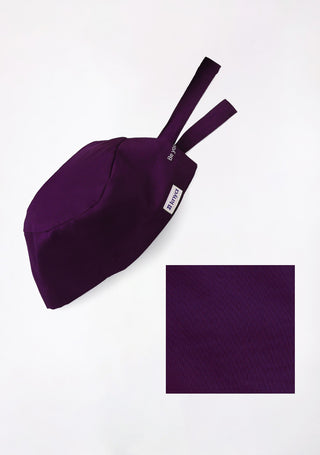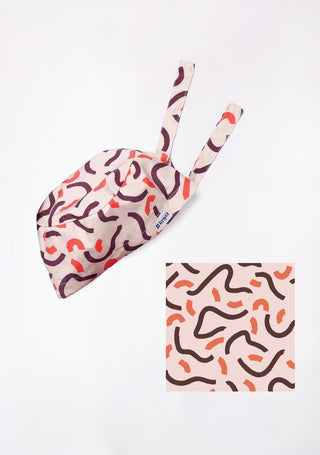Dorsal Vs Ventral: In the anatomical context, the terms "dorsal" and "ventral" play pivotal roles in describing the orientation and positioning of structures within the body. These terms provide a fundamental framework for understanding the spatial relationships of organs, tissues, and organisms. Difference between Dorsal and ventral represent opposite sides, creating a dichotomy that aids in precise anatomical communication and comprehension.
Difference Between Dorsal vs Ventral
Here's a table summarizing the key differences between dorsal and ventral:
|
Feature |
Dorsal |
Ventral |
|
Positional Orientation |
Refers to the back or upper side of an organism or structure. |
Denotes the front or lower side of an organism or structure. |
|
Structural Reference |
Often associated with the vertebral column or backbone. |
Commonly linked to the abdomen or abdominal side. |
|
In Humans |
Corresponds to the posterior aspect of the body, including the spine. |
Corresponds to the anterior aspect of the body, encompassing the abdomen. |
|
Embryonic Development |
Relates to the back side during early embryonic development. |
Pertains to the front side during early embryonic stages. |
|
Nervous System |
In the vertebrate nervous system, the dorsal side often houses the spinal cord. |
The ventral side is commonly associated with the anterior portion of the nervous system. |
|
Anatomical Structures |
In humans, dorsal structures may include the scapula (shoulder blade) and the back muscles. |
Ventral structures encompass the abdominal muscles, chest, and organs such as the stomach and liver. |
|
Examples in Animals |
In quadrupeds, the dorsal side is the upper side, while the ventral side is the belly. |
In fish, the dorsal fin is located on the back, while the ventral fin is on the belly. |
|
Function in Movement |
Dorsal muscles often play a role in extension and backward movement. |
Ventral muscles are involved in flexion and forward movement. |
|
Protection of Organs |
Dorsal structures, like the spine, provide protection to the central nervous system. |
Ventral structures house vital organs such as the heart, lungs, and digestive organs. |
|
Etymology |
"Dorsal" originates from the Latin word "dorsum," meaning the back. |
"Ventral" comes from the Latin word "venter," which refers to the belly. |
Check out Scrubs for Men Here!
What is Ventral?
Ventral refers to the front or lower side of an organism or structure. It is the opposite of dorsal, which refers to the back or upper side. The term "ventral" is commonly used in anatomy and zoology to describe the anatomical position or orientation of structures.
Key Points about Ventral:
- Anatomical Orientation: In anatomical terms, ventral is used to describe the side or surface facing forward or toward the front of the body.
- Structural Reference: Ventral structures are often associated with the abdomen or abdominal side of an organism.
- Embryonic Development: During early embryonic development, the ventral side is the front side of the developing organism.
- Nervous System: In the vertebrate nervous system, the ventral side is typically associated with the anterior portion, including structures like the ventral nerve cord.
- Examples in Humans: In humans, the ventral side includes the front of the torso, including the chest and abdomen.
- Functional Role: Ventral muscles are often involved in flexion and forward movement, contributing to activities such as bending forward or bringing parts of the body closer to the front.
Understanding the term "ventral" is crucial in anatomical descriptions and discussions, providing a standardized way to communicate the orientation and location of structures in living organisms.
What is Dorsal?
Dorsal refers to the back or upper side of an organism or structure. It is the opposite of ventral, which refers to the front or lower side. The term "dorsal" is commonly used in anatomy, zoology, and embryology to describe the anatomical position or orientation of structures.
Key Points about Dorsal:
- Anatomical Orientation: In anatomical terms, dorsal is used to describe the side or surface facing backward or toward the back of the body.
- Structural Reference: Dorsal structures are often associated with the vertebral column or backbone of an organism.
- Embryonic Development: During early embryonic development, the dorsal side is the back side of the developing organism.
- Nervous System: In the vertebrate nervous system, the dorsal side is typically associated with the posterior portion, including structures like the dorsal nerve cord.
- Examples in Humans: In humans, the dorsal side includes the back of the torso, including the spine and shoulder blades.
- Functional Role: Dorsal muscles are often involved in extension and backward movement, contributing to activities such as arching the back or moving limbs backward.
Understanding the term "dorsal" is fundamental in anatomical descriptions and discussions, providing a standardized way to communicate the orientation and location of structures in living organisms.
Check out the best lab coats here!
Similarity Between Dorsal and Ventral
Similarities Between Dorsal and Ventral:
- Anatomical Orientation:
- Both terms are used to describe the positional orientation of structures in living organisms.
- Dorsal refers to the back or upper side, while ventral refers to the front or lower side.
- Embryonic Development:
- In embryonic development, both dorsal and ventral sides play crucial roles in defining the anterior-posterior axis.
- The dorsal side is associated with the back, and the ventral side is associated with the front during early embryogenesis.
- Nervous System:
- In the vertebrate nervous system, both terms are used to describe specific regions.
- The dorsal side is associated with the posterior portion, while the ventral side is associated with the anterior portion.
- Structural Reference:
- Both dorsal and ventral are used to indicate the location of structures within an organism.
- Dorsal structures are often associated with the vertebral column, and ventral structures are associated with the abdomen.
- Functional Role:
- Muscles on both the dorsal and ventral sides contribute to the movement and functionality of the organism.
- Dorsal muscles are involved in extension and backward movement, while ventral muscles are involved in flexion and forward movement.
- Usage in Zoology:
- In zoology, both terms are widely used to describe the external features and characteristics of animals.
- Dorsal and ventral surfaces are important for defining the overall body plan and symmetry of organisms.
Understanding the similarities between dorsal and ventral provides a foundation for anatomical descriptions, ensuring clear communication about the orientation and location of structures in diverse living organisms.
|
Check out More Articles |
|













